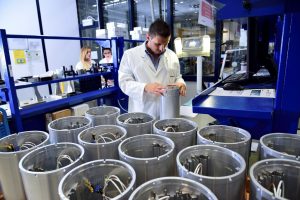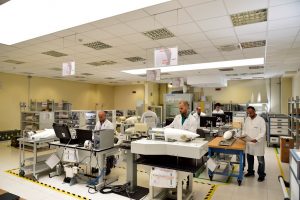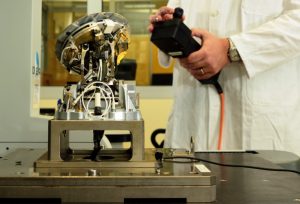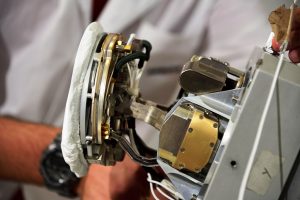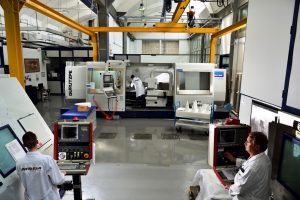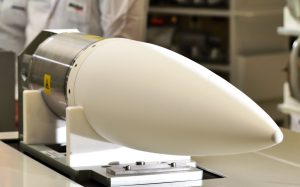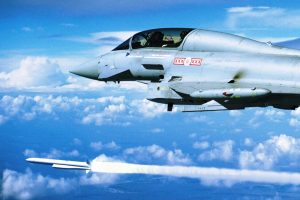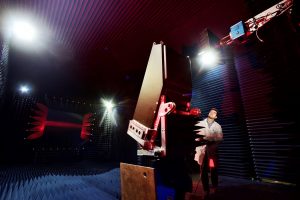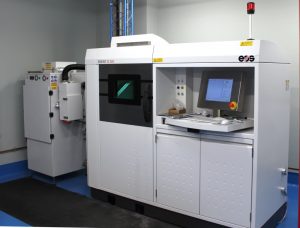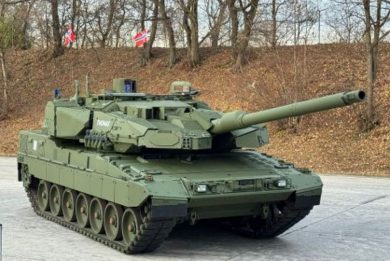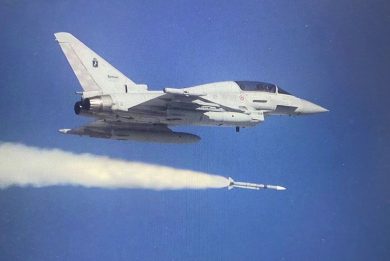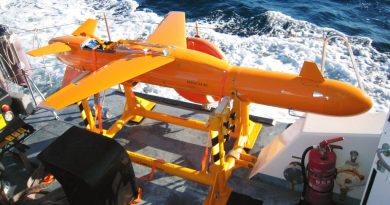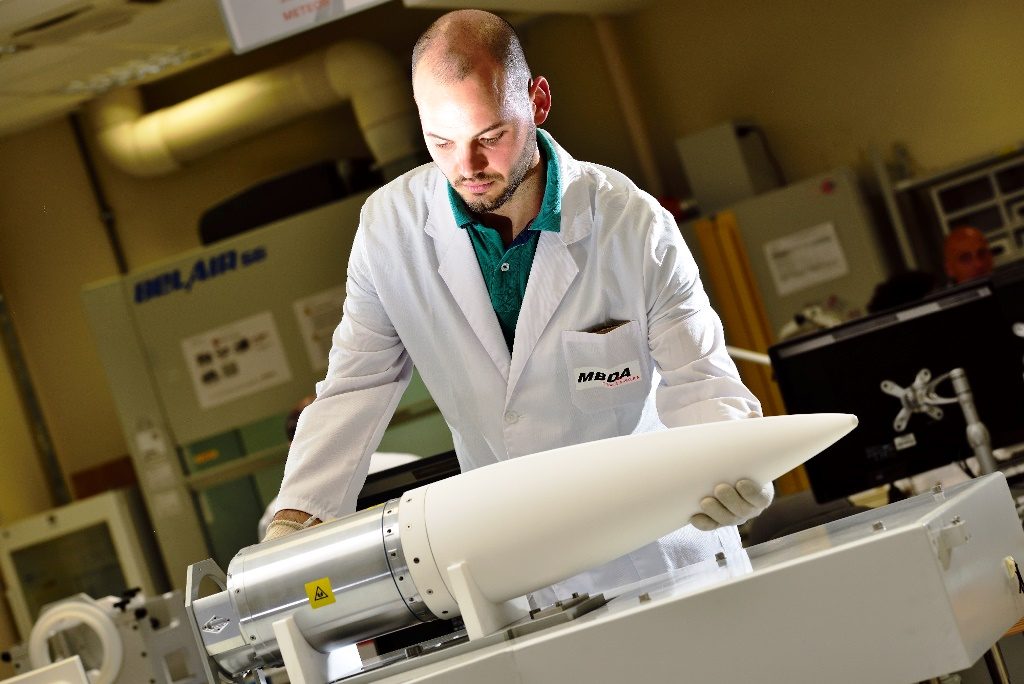
MBDA Italia Fusaro site: seekers and much more
By Paolo Valpolini
A few kilometres west of downtown Naples, close to the Fusaro Lake, we find a quite anonymous industrial facility belonging to MBDA. The Fusaro site, as it is usually referred to, hosts one of the key capabilities of the European missile company, as it is one of the few sites were one of the core elements of a missile, the seeker, is designed, developed and manufactured.
EDR On-Line was invited to a full briefing on the Fusaro site activities, access to operational areas being denied due to their highly classified status. The activities of the Fusaro site were illustrated by Antonello Fiore, MBDA’s Italy Director of Operations, who first highlighted the objectives of the Italian branch of MBDA in the coming years. “Fusaro is one of MBDA Italia sites, Italy, through Leonardo, having a 25% participation in MBDA. However in terms of activities we are at 15%, while manpower represents 12% within the Group. We have considerably increased our manpower in the last four-five years, shifting from around 1,200 to some 1,600 employees, our target being to reach 2,000 in five years time,” he explains, underlining that this will be the result of new contracts acquired as well as of in-sourcing of some core competencies in the missile production field. The Fusaro site hosts around 450 people, mostly engineers and technicians, around 120 of them are employed in Research and Development due to the extremely high-tech content of the activities. The site keeps close contacts with Academia, in order to pave the way for the recruitment of new engineers in the various branches needed within the company.
Military activities at Fusaro started 100 years ago as Fabbrica di Siluri Italiana (Italian Torpedo Factory) and since has changed name and activities, the switch to electronics being dated 1951 when then Microlambda started cooperation with Raytheon on radars. The current facility was built in the 1980s, during the Selenia period, the buildings being currently the subject of a complete reshuffling.
For many Fusaro means seekers, which is only partly true as many other activities are carried out in that site. “The site has seen an important shift from being simply a production site of a single item, the Aspide missile with its semi-active seeker, to today capabilities that include research, design and development of seekers, RF datalink and antennas, radomes, C4 modules, launch systems, as well as of all test equipment needed to verify our products before delivering them to other MBDA facilities or to the final customer,” Antonello Fiore explains. The advent of MBDA in deeply modified the way Fusaro is working, as now over 90% of the activities is done in cooperation with foreign entities, as it is the case in programmes such as the Aster, the Meteor and the CAMM family.
However seekers definitely remain one of the Fusaro core activities. “We evolved from semi-active seekers to active seekers, as we cooperated with MBDA France on the Aster 30 active seeker and are currently involved in the design and development of the new seeker for the B1 NT, which will provide a good capacity against tactical ballistic missiles, with much increased performances compared to the original missile currently in use with the French Air Force, the Italian Army, and the UK, French and Italian navies.”
Seekers do not mean only electronics, but also very high precision mechanics, as the antenna dish must always remain oriented towards the target, many missiles flying at supersonic speed, with high agility, the mount being therefore submitted to a high number of g, deformation due to forces induced by acceleration being part of the game. While in the past most of the computing was done in the missile body, bringing the signal from the moving antenna to the fixed part of the missile being an issue, nowadays most of the signal processing is done at the back of the antenna, hence only digital signals must be transferred, which is a much easier task. To support this we were shown a picture of the Meteor seeker, where the computing module is at the back of the antenna.
“The Meteor is a success story,” Antonello Fiore points out, “as beside the contracts with the six nations that launched the programme it has been sold widely on the export market, with over 1,600 missiles produced, and we at Fusaro got to a production rate of over 300 seekers per year.” In perspective MBDA announced the launch of a Meteor Capability Enhancement Programme (CEP). This might involve the adoption of an active electronically scanned array seeker, the MBDA Italy seekers house having actively worked for some years now on AESA technology, some applications having been illustrated during the briefing. “Cost is definitely a key driver, the aim being to reduce the seeker UPC (Unit Product Cost),” and to this end Mr. Fiore underlines that the defence industry should benefit of the returns of huge investments made in that field in the commercial sector, mostly for 5G applications.
Two programmes might benefit of an AESA seeker, one potentially being the Teseo Mk2E and one the Meteor in its upgraded version. “For the Teseo we have just carried out a concept evaluation phase, and the seeker of the new version of that missile might be either a conventional one or an AESA one. As for the Meteor, here too the AESA solution is being evaluated, the outcome being very much the result of the balance between performances, costs, and nations’ work share,” MBDA’s Italy Director of Operations says. Another obvious aim is that of having a missile as much as possible ITAR-free, which would ease new successes on the export market of a missile that many customers have defined a game changer.
Beside seekers, another key area in the Fusaro portfolio is that of radomes. “We are not only the single radome centre of excellence within MBDA, we are also the key European producer of radomes for supersonic missiles,” Antonello Fiore states, hence the majority of supersonic missiles produced in the Old Continent are fitted with a radome coming from Naples. The company started long time ago acquiring the ceramic-based technology in the United States, the production of the raw material from which the radomes are made being now done in Italy by a third party. As MBDA explained, the radome acts as an electromagnetic window that is as much transparent as possible to the frequencies used by the radar.
Shapes might differ, those for subsonic missiles having a much lower length/diameter ratio, which facilitates radiation, while supersonic missiles require more elongated shapes that give reduced aerodynamic drag with higher problems to solve in terms of RF radiation. “To my knowledge the Meteor radome is the one with the higher length over diameter ratio produced,” Giacomo Sabino, Research and Technologies and Hardware Engineering Italian Operations Director underlines. Moreover radomes must withstand very high temperatures when flying for some time at maximum speed on a supersonic missile.
At the MBDA Fusaro facility radomes are mainly produced by casting, the raw product being then machined outside to give it the right surface finish, while inside a much more complex work is done, as to tune the radome to ensure the best possible radiation distribution the thickness changes from place to place, according to the design generated by the R&D department. “The radome division is the only one that carries out the whole process, from research and development to production,” Giacomo Sabino proudly explains. The aim of the Fusaro engineers is to get as close as possible to what is done over the pond, where R&T investments are orders of magnitude higher. The radome area benefit of some Italian MoD research programmes, and currently a new radome production method, based on pressed ceramic powder is being developed. “Compared to the standard technology, which generates radomes suffering of weather erosion in case of very intense rain coped with a tip made of a very specific metallic materiel with an expansion factor very close to that of the ceramic radome being inserted, the new production method allows us to manufacture all-weather radomes,” Sabino explains. EDR On-Line understood that this new technology does not reduce much the production time of a radome that is estimated in some tens of working hours but provides much stronger mechanical characteristics, which allows reducing the average thickness thus diminishing RF transparency problems, and in perspective it should also allow the Fusaro site to produce radomes for future hypersonic missiles. Another technology that is being experimented for producing radomes is that based on Ceramic Matrix Composites, which allows generating more complex shapes, which might be needed for hosting new embedded functions and more than one sensor.
Radomes design benefits of the huge amount of data acquired in the last years, which allowed generating mathematical models permitting to reduce the design time, the advent of Artificial Intelligence (AI) further helping in this field.
The AI investment being increasing within the MBDA Group R&D budget, it now spreads all over the site, giving benefits in many areas, applications of artificial intelligence being at different TRLs, but all being on the rise. One of these is definitely the testing process, Fusaro having developed a single anechoic room that allows carrying out near field, compact range as well as RCS measurements in bands ranging from L to W. Recently a customer required a seeker to be tested at high temperature, hence a climatic chamber was added. Testing capacity is vital for Fusaro, and might become even more critical as, according to what EDR On-Line was told during the briefing, testing AESA seekers is something quite more complex than testing conventional ones. The test room is capable to withstand the high power used in AESA systems and will therefore remain a key asset also in the future.
Beside the aforementioned AI, another new technology that is being inserted at Fusaro is definitely 3D additive manufacturing. This is being considered for the production of those complex elements that cannot be produced with conventional methods, adding an element of flexibility in the design phase, as well as for other elements, always keeping an eye on cost-effectiveness. Beside the typical 3D printer technology, aerosol jet printing is also considered, especially for printed circuit boards production.
The aforementioned AESA technology is exploited not only for seekers; MBDA’s Fusaro plant developed and produced an AESA uplink system based on four flat AESA antennas covering 360° to allow customers that intend maintain their in-service radars not fitted with the uplink capacity to operate with Aster missiles. A further smaller two-way AESA data link has also been developed, however MBDA officials did not commented on the system it was designed for.
In recent times the Fusaro has been involved in activities on launch systems, a complex dedicated to the integration of mechanical, electric and electronic components on launch platforms such as trucks, as well as fitting out command and control shelters, has been added.
The briefing we were given at Fusaro highlighted one key issue: designing and producing the front part of a missile is very much a multi-disciplinary work, that needs close cooperation since the white-sheet phase between a number of branches, experts in RF, mechanics, radomes, etc. becoming a single team due to the heavy interactions at all levels in the design, that have to be addressed since inception.
“Advanced communications, computing, cybersecurity, AI evolution, robotics also aimed at robotising some C2 functions in 10-15 years, nanomaterials, metamaterials, and 3D multimaterial are some of the evolutive technologies we consider might impact our work in future years,” Antonello Fiore concludes.
All photos courtesy MBDA

